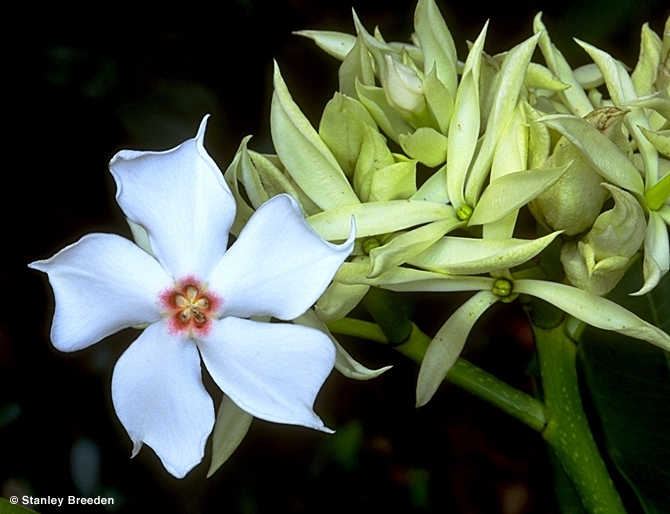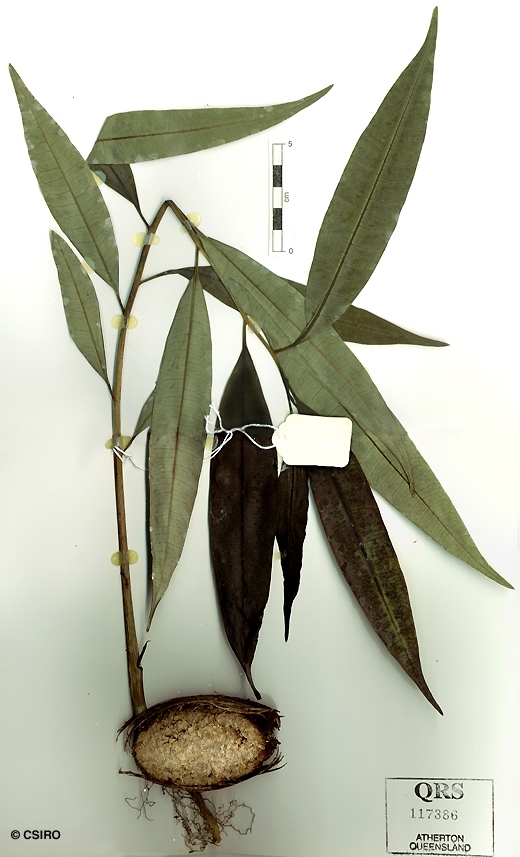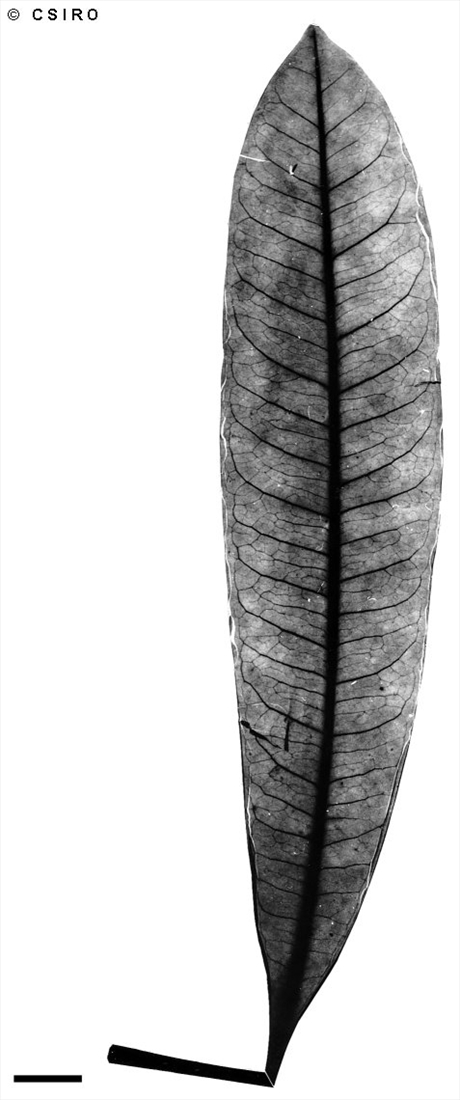Australian Tropical Rainforest Plants - Online edition
Cerbera manghas L.





Linnaeus, C. von (1753) Species Plantarum 2: 208. Type: Habitat in Indiis ad aquas.
Beach Milkwood; Dog Bane; Dog Bone; Grey Milkwood; Milkwood, Grey; Milkwood; Pink Eyed Cerbera; Rubber Tree
Exudate copious, usually milky but often slightly green or yellowish.
Fresh fruits produce a milky exudate when cut. Fruits about 6-7 x 3.5-4 cm. Endocarp thick, woody and fibrous.
Four to six cataphylls normally produced before the first true leaves. First leaf blades narrowly lanceolate to elliptic, apex drawn out into a fine point, base attenuate. Intramarginal vein present. At the tenth leaf stage: leaf blade about 17.5 x 3.2 cm, petiole about 1 cm long, lateral vein angle almost 90 and the veins forming loops near the blade margin. All seedling parts produce a milky exudate when cut or broken. Taproot slightly swollen. A large seed about 8 x 4 cm remains attached to the seedling. Seed germination time 55 days.
Cases of poisoning resulting in death have been reported after consuming the seeds of this species. Everist (1974).
A potent drug cerberin has been extracted from the extremely poisonous seeds; it has some resemblance to digitalis in its effect on the heart, and has been used in medicine in very small amounts. Other parts of the plant are less toxic. Cribb (1981).





